- PHOENIX METRO (623) 939-3329
- TUCSON (520) 200-2958
- PRESCOTT (928) 445-3828
- PHOENIX METRO (623) 939-3329
- TUCSON (520) 200-2958
- PRESCOTT (928) 445-3828
All three major electrical utilities in Arizona—APS, SRP, and TEP—provide a way to reduce your utility bill by 25% to 50% or more. Some customers save $2,500 a year, while others have achieved reductions exceeding 50%. At Advantage Home Performance (AHP), we guarantee that we can reduce your utility bill by a minimum of 25% while at the same time maintaining or improving your home’s comfort levels. You can go directly to our Guarantee, or you can read this article and learn why we are so confident that we can achieve these types of savings.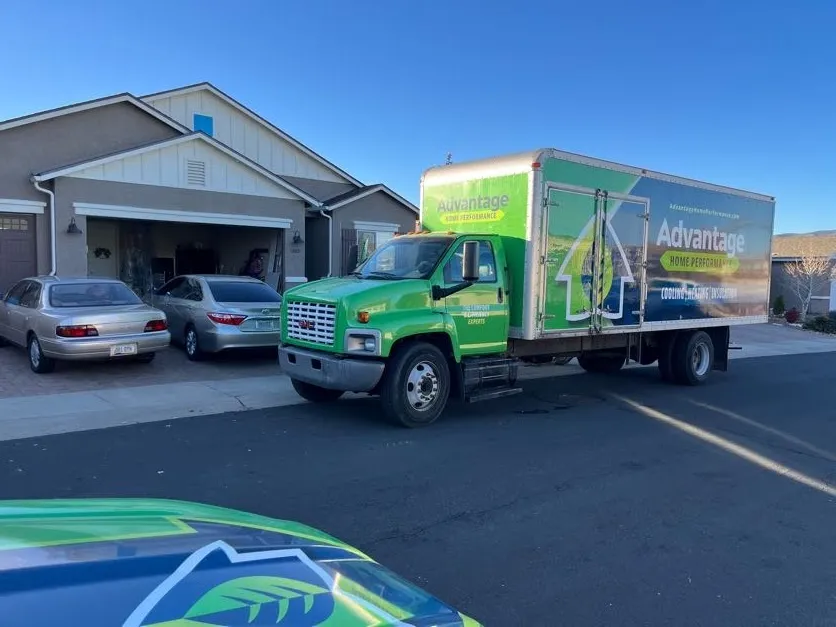
At Advantage Home Performance (AHP), we encounter many homeowners during audits or at home shows who are frustrated by their high electric utility bills. They feel helpless. They are unaware that their utility company offers rate plans and incentives that can help them achieve significant savings.
Follow these five steps to lower your electric utility bill by 25% to 50%. None are complex; however, each is essential to achieving this goal. A qualified auditor can also assist you in navigating this process.
If you’re interested in saving money while enhancing your comfort, this article outlines the steps necessary to achieve that goal. Although this path may seem daunting, by collaborating with a reputable audit and repair company and adjusting your electricity consumption during peak hours, you’ll be amazed by how simple it is and how much you can save.
Demand Side Management & On Peak Hours
Your utility has a problem and wants to encourage you to be part of the solution. Its goal is to avoid or delay the construction of expensive peak demand power plants, which operate for only a few hundred hours a year during times of high energy demand. To achieve this aim, it offers demand-side management programs designed to incentivize you to reduce electricity usage during on-peak hours. These demand-side management programs create a win-win situation.
When does on-peak demand occur? Imagine a hot summer afternoon in Arizona when the outdoor temperature reaches 110°F between 4:00 pm and 5:00 p.m., families across the state arrive home from work and school during the hottest part of the day. Air conditioners are running, and people are cooking, doing laundry, and heating water for laundry, showers, and dishwashing. Millions of people are doing the same thing. Demand for power surges across the state, marking the on-peak period for your utility.
In the graphic below, you can see when On-Peak and Off-Peak usage occurs in this specific plan. Notice in the APS plan the difference in the cost of a kWh. During off-peak, a kilowatt of energy costs 12.345¢, and on-peak, the kWh costs 34.396¢. Off-peak power is 2.8 times cheaper.
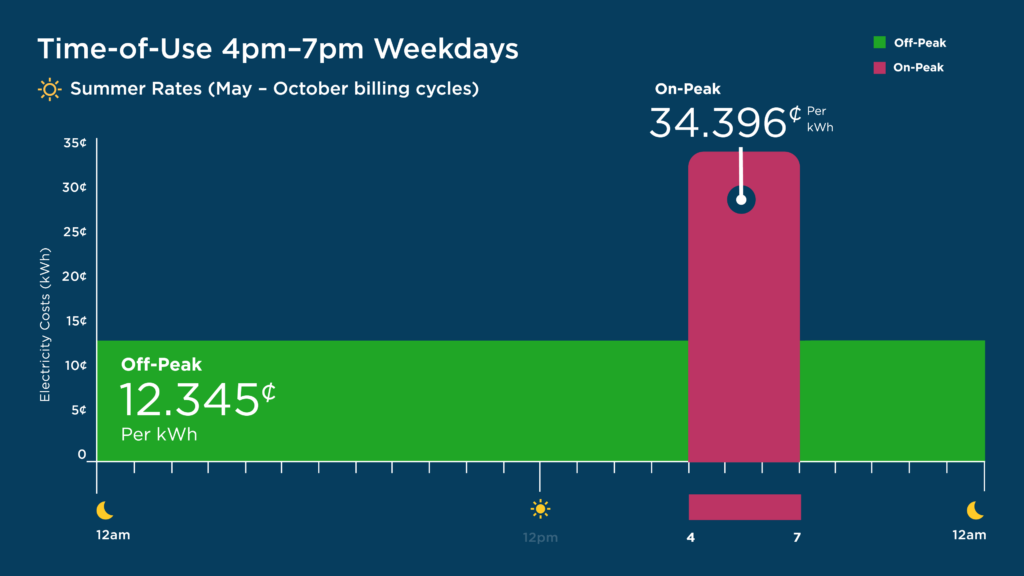
The table below shows the on-peak hours for various time-of-use utility plans. It’s important to note that on-peak hours occur only on weekdays. More information about these plans is available on your utility website.
|
Utility |
Name of Plan |
On-Peak Hours Weekdays |
Summer Peak |
|
APS |
Time-of-Use Weekdays with a Demand Charge |
4:00 – 7:00 pm |
May – Oct |
|
TEP |
Peak Demand |
3:00 – 7:00 pm |
May – Sept |
|
SRP |
Residential Demand Price Plan Pilot* |
2:00 – 8:00 pm |
July – Aug |
|
SRP |
EZ-3 Price Plan |
3:00 – 6:00 pm or 4:00 – 7:00 |
Year-round |
* Only 5000 people can participate in the pilot
Reducing or shifting your power consumption from on-peak hours to off-peak hours could significantly lower your electricity costs and utility bill.
The first step in reducing demand during peak hours is ensuring that your home is energy efficient. If your home experiences significant heat gain due to inadequate insulation, duct leakage, or insufficient solar control, you consume more power than necessary.
Widespread Insulation Problems
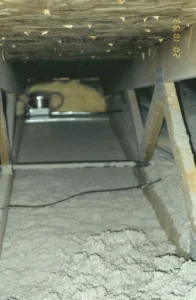
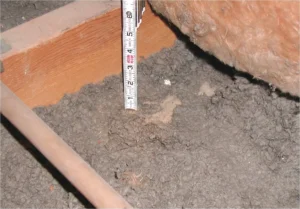
Quality insulation in your attic is essential for maximizing your utility rate plan. Missing or poorly installed insulation increases heat gain during peak hours, leading to longer air conditioning run times. According to SRP, “proper insulation could reduce your overall heating costs by about 10%.
To this day, no week goes by in Phoenix, Tucson, or Northern Arizona without our auditors and estimators finding insulation problems. They consistently discover uninsulated knee walls in attics with varying ceiling heights, open chases, and blown cellulose or fiberglass insulation that tapers down to bare sheetrock.
Why do utilities offer insulation rebates? In most instances, your home wasn’t properly insulated the first time. Insulation is often treated as a commodity in Arizona rather than as an integral part of the system. Be sure to hire a quality-conscious insulation contractor to make repairs because insulating existing homes is harder than insulating new homes.
Improving your insulation brings several benefits, both immediate and long-lasting. Upgrading insulation lowers your utility bills and increases your comfort. APS, SRP, and TEP all provide generous insulation rebates to help offset repair costs.
Duct leakage
Air distribution systems are the Achilles heel of most air conditioning systems in Arizona. If a duct system leaks in an attic during the hot summer months, it could be drawing in dirty 120°F air. Duct systems often have numerous problems: they leak, the flex ducts frequently have kinks or are crushed, they sometimes use framed cavities with significant leaks to the attic, or they aren’t designed correctly.


Eliminating duct leakage yields significant benefits. According to the Energy Star website, “leaky ducts can reduce the efficiency of heating and cooling systems by up to 20 percent. Duct leakage contributes to high utility bills and deteriorates indoor air quality. If your duct system has considerable leakage, you will not achieve optimal results with a time-of-use demand charge utility plan.”
Duct leakage can be measured using either a duct blaster or a blower door, employing the pressure pan method. Sealing ductwork requires attention to detail, which is often lacking in many, if not most, traditional heating and air conditioning companies. Numerous joints, connections, and fittings need sealing. It is important to note that sealing duct systems does not require exotic aerosolized technology.
Solar Control Strategies
Solar control strategies are as important as full-depth insulation and airtight ductwork. Shade screens, window films, and low-E windows can significantly reduce energy consumption by minimizing solar heat gain through windows, potentially lowering cooling costs by as much as 25%. Both SRP and TEP offer rebates for shade screens and window films.
Water Heating
Water heaters are the second-highest energy consumers in a typical home. An electric water heater can constitute up to 25% of your electricity bill. If you have an electric water heater and are heating water on a fixed-rate plan, you are missing a significant opportunity to lower your utility bill.
Why heat your water with an electric water heater during on-peak hours when a kWh of electricity costs two to three times more than it does during off-peak hours on a time-of-use plan? Your auditor will introduce you to various strategies to save money on water heating without compromising comfort.
Qualified Contractor Programs
Who should be responsible for identifying these problems and opportunities in your home? According to your utility, a qualified contractor is necessary. A qualified contractor is a professional who is licensed, bonded, insured, and in good standing with the Better Business Bureau and the Arizona Registrar of Contractors. They must also possess the necessary industry certifications. Your utilities provide a list of these contractors on their websites.
The right auditor must have a comprehensive understanding of utility rate plans and work effectively with them. The audit company you choose should provide in-house HVAC and insulation solutions. Your audit company should be disqualified if it does not meet this criterion.
I advocate for partnering with an audit company that embodies an efficiency mindset. If energy conservation is not ingrained in your audit company’s DNA, you are wasting your time. Quality work is produced by true believers, not by companies whose primary goal is to profit from rebates or sell you as much “stuff” as possible.
The Home Energy Assessment
Experience has shown us that having a knowledgeable auditor present in your home is essential for realizing substantial savings on your utility bills. The three key components of this process include the homeowner interview, home inspection, and analysis of utility bills.
Your utilities provide free virtual energy audits if you’re too busy or not quite ready to meet with a contractor. A virtual audit is conducted via a smartphone. It serves as a helpful first step, but it cannot replace an in-person inspection by a knowledgeable auditor.
Rebates & Quality Control
All three utilities effectively explain the available rebates on their websites, so I won’t break them down in this article. I will say that some of the utility rebates are quite generous.
If improvements are made, all three utility programs will have quality control measures to ensure that work is completed correctly. They utilize a third-party inspection service to conduct spot inspections on the performed work, maintaining the program’s standards.
The Right Rate Plan
While these efficiency improvements may or may not yield the largest savings on your utility bill by themselves, the key to achieving the greatest savings lies, in part, in combining efficiency upgrades with enrollment in a utility rate plan that rewards energy conservation and load shifting. The right rate plan will allow you to reduce your kWh cost by 50% to 70%. This low rate can only be realized during off-peak hours.
A time-of-use plan, whether it includes a demand charge or not, is the most effective way to lower your energy costs. By limiting your energy usage during on-peak hours on weekdays and avoiding the simultaneous use of major appliances, you can save a significant amount of money.
|
Utility |
Name of Plan |
On-Peak Per kWh |
Off-Peak Per kWh |
KWh Cost % Reduction |
|
APS |
Time-of-Use Weekdays with a Demand Charge |
14.23¢ |
5.94¢ |
58% |
|
TEP |
Peak Demand |
14.37¢ |
7.29¢ |
49% |
|
SRP |
Residential Demand Price Plan Pilot* |
8.23¢ |
6.13¢ |
25% |
|
SRP |
EZ-3 Price Plan Summer Peak July-Aug |
36.45¢ |
10.54¢ |
71% |
* Only 5000 people can participate in the pilot
As you can see, the price you pay for a kWh is significantly lower when using off-peak electricity. A kWh costs 58% less during off-peak hours and on APS Time-of-Use Weekdays with a Demand Charge plan. This illustrates how shifting energy consumption can reduce your bill significantly.
The SRP EZ-3 Price plan is not a time-of-use plan with a demand charge. We present it to illustrate how much SRP will pay homeowners to avoid using power during on-peak times. You can see that a kWh costs 70% less during off-peak hours than on-peak hours.
The Demand Charge

There are consequences for enrolling in a time-of-use plan with a demand charge and not adhering to the utility’s rules, as appropriate. First, you’ll agree to pay a higher kilowatt rate during on-peak hours with certain plans, which is significantly more than your off-peak rate.
The real kicker is the demand charge. With a demand charge, your energy costs could actually rise under the time-of-use plan if you do not follow the plan guidelines and stagger appliance use during peak hours. This concept is somewhat counterintuitive to understand.
To calculate your monthly demand charge, your utility identifies the highest usage hour (kW) during peak times and multiplies it by the utility’s demand charge. For APS, this charge is $19.85. The demand charge is based on the highest usage hour multiplied by this charge.
If you are genuinely motivated to reduce your energy bill, you can manage your peak-hourly demand during off-peak hours by monitoring your hourly kWh consumption. Your utility company makes it very easy. In the screenshot from my cell phone, you can see that between 5:00 and 6:00, the furnace was turned on, causing energy use to spike to 2.94 kWh. With the lights, coffee maker, and gas furnace fan motor running, the power consumption jumped to 2.94 kWh.
For the sake of example, let’s consider a family on an APS “Time-of-Use plan from 4 pm to 7 pm Weekdays with a Demand Charge” who does not consciously manage their power usage. This family often makes the mistake of using multiple appliances at the same time during on-peak hours. Their maximum hourly demand was 11 kW. Refer to the table below to see how the highest usage hour was determined.
|
Appliance |
KW demand |
Demand Assumptions for Each Appliance |
|
Air Conditioner / Heat Pump |
3.4 |
4,545-Watt AC or heat pump operating for 45 minutes |
|
Dryer |
5.6 |
5,600-Watt dryer operating for 60 minutes |
|
Electric water heater |
0.4 |
4,500-Watt heater cycling on and off for 60 minutes |
|
Refrigerator |
0.6 |
700-Watt refrigerator cycling on-and- off 60 minutes |
|
Lighting |
1.0 |
Typical house lighting for 0.4-Watts per sq ft 60 min. |
|
11 kW |
In this example, the demand charge is $218 (11 x $19.85 = $218). The calculation is straightforward once you know how to determine the highest hour usage for the billing period. This homeowner might be better off on a fixed-charge plan, paying the same rate per kWh 24/7.
To better understand the demand charge, you can monitor your energy usage hour by hour on any of the utility companies’ websites. This exercise can provide valuable insights if you have the time or interest to educate yourself on how you and your family consume energy.
Some of our customers have demand charges of less than $40 because they make conscious decisions regarding energy use. As you can see from the table above, running a dryer during on-peak is a big mistake if you are on a time-of-use program with a demand charge.
Once again, our auditors will guide you through the plans, ensuring you understand both the benefits and drawbacks. It may seem daunting, but it’s actually quite straightforward. This is especially true if you feel comfortable navigating your utility’s website or app that displays power consumption.
Behavioral Changes
To maximize savings, use energy efficiently during peak hours. A significant demand charge will be added to your monthly bill if you or a family member runs an electric dryer during peak hours.
Adjusting your electrical usage is not difficult. Here are a few logical steps you can follow to reduce loads during on-peak hours.
Technology can help you manage your load. You no longer need to worry about adjusting thermostat settings, managing water heater usage, or scheduling your dishwasher. Technology can effectively shift loads to off-peak hours.
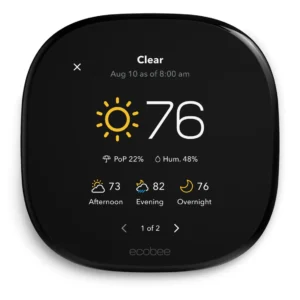
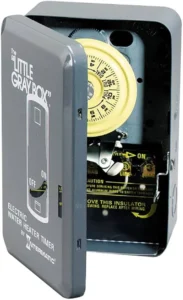
Water Heater Timers & Smart Water Heaters
Why heat your water with an electric water heater during On-Peak hours when a kWh of electricity costs two to three times more than it does during off-peak hours? By installing an electric water heater timer, you can shift some of your energy load to the lower-cost off-peak hours, saving both energy and money. Heat pump water heaters are at least twice as efficient as standard electric water heaters. Both SRP and TEP offer generous rebates for heat pump water heaters.
Precooling with Smart Thermostats
Nearly half of the energy used in a home goes to heating and cooling. To shift your energy consumption to off-peak hours, install a smart thermostat and precool your home before peak hours begin.
The precooling strategy is simple. Install a programmable or smart thermostat, follow these steps:
State-of-the-Art HVAC Systems
If precooling strategies seem too cumbersome for your lifestyle and your AC system is over 15 years old, you might consider a more efficient variable-speed heat pump HVAC system. Variable-speed heat pumps are engineered to adjust their output based on the cooling or heating needs, enabling them to operate at lower speeds and wattages when less cooling or heating is necessary.
A new variable-speed 20 SEER heat pump will use approximately 25% less energy than a 15-year-old single-stage 14 SEER unit: 3,400 watts compared to 2,400 watts. On low speed, this new unit consumes as little as 1,200 watts.
Another strategy to cool down the main area of the house during peak hours is using a ductless mini-split. A state-of-the-art 1.5-ton mini-split typically consumes around 1,500 to 1,800 watts per hour when operating at full capacity, boasting an efficiency of around 25 SEER.
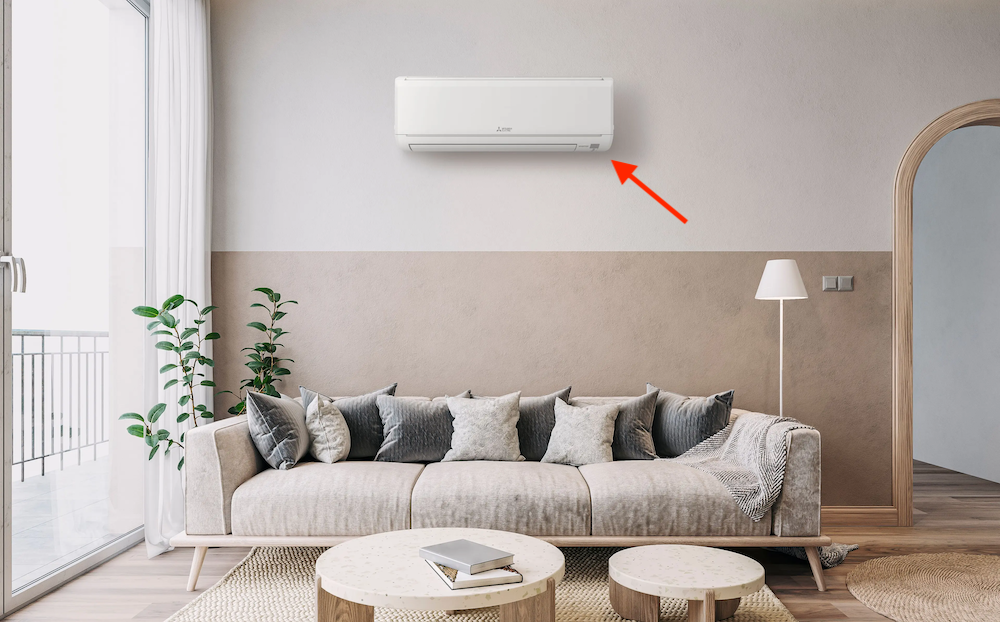
Utility Bill Savings Versus Standard Payback Periods
The payback period for insulation repairs, duct sealing, or even a high-efficiency heat pump should be evaluated in the context of your entire home. Comparing the initial cost of efficiency improvements to the savings they produce, without considering the home’s overall energy consumption and your utility rate plan, is shortsighted.
The most efficient HVAC system on the market operates for the shortest amount of time, thanks to improvements in efficiency. By sealing ductwork, repairing insulation, adding solar control if necessary, and enrolling in a utility rate plan that rewards energy efficiency and conservation, your total home energy savings on your utility bill will significantly exceed the savings from insulation repair or a new unit alone.
If you follow the guidance in this article and cut your $6,000 annual utility bill by 50%, the payback period for your efficiency upgrades can be quite swift. A new HVAC unit, duct sealing, insulation, and other efficiency improvements, which total $30,000, could be repaid in about 10 years.
Some of these investments could pay for themselves again when you eventually sell your home. A low annual utility bill might be a selling point. Home inspectors wouldn’t discover missing insulation or leaky ductwork. These issues then become negotiation points for a potential buyer.
Case Study
One of our customers in Tucson was highly motivated to reduce their annual electric bill of $6,000. Their home measures 3,200 square feet and includes a pool. Six people reside in the house. The homeowners were frustrated with both their utility company and the high bill they received. Like most people, it never occurred to them that they could lower their utility bill by 40%.
They scheduled an audit with Advantage Home Performance. Our auditor identified common issues related to the home’s insulation, duct system, and inadequate solar control. Additionally, the water heater and pool pump operated during peak hours. An analysis of the utility bill revealed that they were on a fixed-rate plan.
This family took the initiative to make the recommended repairs and received over $1,500 in rebates for insulation, duct sealing, shade screens, and smart thermostats. They also installed timers for their water heater and pool pump and used their smart thermostats to implement precooling strategies.
The whole family committed to making behavioral changes to shift loads away from “On-Peak” hours. They said it wasn’t hard to make these adjustments. The biggest change was not running the clothes dryer during on-peak hours. They now use the utility app to ensure they are on track to maintain a minimal demand charge. They can track their real-time power consumption.
The uncanny aspect of this story is that the family is more comfortable. They can walk into their home and feel cooler because it actually is cooler. They have learned to precool their home during off-peak hours when a kilowatt-hour costs half as much.
This family is a big winner. Efficiency improvements to their home, smart technology use, and behavior changes have significantly impacted their utility bills. They have reduced their bill by 40%, saving at least $2,400 annually, and they feel more comfortable.
Conclusion
The approach I’m advocating for reducing your utility bill allows you to have it all to a certain extent, which is rare today. You can save money, enjoy greater comfort, and reduce your carbon footprint if you’re concerned about the environment.
Contact Advantage Home Performance (AHP) for an audit or an HVAC quote. AHP is a licensed HVAC and insulation contractor. All our auditors are experts in HVAC system design and installation and are well-versed in utility rate plans and rebates. Our goal is to help you save while improving your comfort.
Mike Uniacke is the owner of Advantage Home Performance (AHP), a licensed HVAC and insulation contractor. Mike Uniacke formerly taught Building Science as an adjunct faculty member at Yavapai Community College. He also wrote the article “Cheating – The Insulation Industry’s Dirty Secret.” Home Energy Magazine Nov/Dec 2000. For more information, visit advantagehomeperformance.co
RESOURCES
APS
SRP
TEP
Demand Calculator